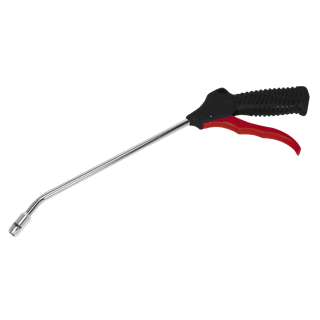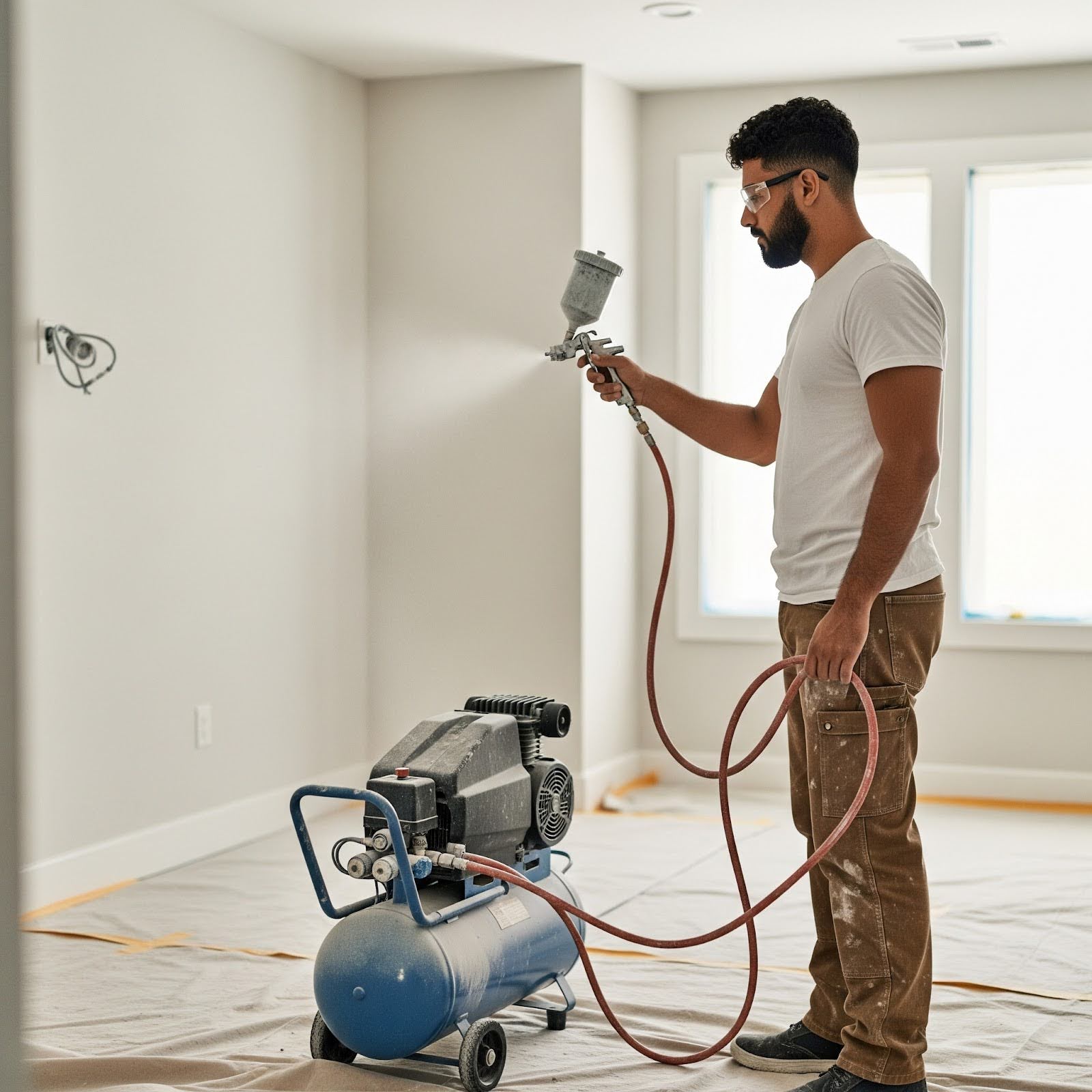Overview of the Importance of Air Line Fittings
Air line fittings are crucial components in any compressed air system, serving as the connectors between different sections of piping, hoses, and tools. These fittings ensure that air flows efficiently and safely from the compressor to the point of use, maintaining system integrity and performance. High-quality fittings reduce the risk of leaks, pressure drops, and system failures, which can lead to costly downtime and repairs.
In industries where compressed air is essential, such as manufacturing, automotive, and medical sectors, the reliability of air line fittings directly impacts productivity and operational efficiency. Selecting the right fittings and maintaining them properly is vital to ensure the longevity and effectiveness of the entire compressed air system.
Common Applications in Various Industries
- Automotive Industry: Air line fittings are used extensively in automotive repair shops for powering pneumatic tools, inflating tyres, and operating car lifts.
- Manufacturing Sector: In manufacturing, compressed air systems are integral for running machinery, automation equipment, and assembly lines. Air line fittings connect various tools and machines to the compressed air supply.
- Medical Field: In medical facilities, clean and reliable compressed air is critical for operating equipment such as ventilators, dental tools, and laboratory instruments.
- Home Workshops: DIY enthusiasts use air line fittings to connect air compressors to tools like nail guns, spray guns, and airbrushes, facilitating various home improvement and crafting projects.
Types of Air Line Fittings
Push-to-Connect Fittings
Description
Push-to-connect fittings, also known as push-in or instant fittings, are designed for quick and easy connections. These fittings allow the user to simply push the tubing into the fitting for a secure and leak-free connection without the need for additional tools.
Uses
Push-to-connect fittings are commonly used in pneumatic systems, water lines, and other applications where quick disconnections and reconnections are necessary. They are ideal for applications requiring frequent maintenance or modifications.
Advantages
- Ease of Use: Quick and tool-free installation and disconnection.
- Speed: Reduces assembly time, enhancing productivity.
- Flexibility: Can be used with various types of tubing materials.
Disadvantages
- Pressure Limitations: Not suitable for very high-pressure applications.
- Material Compatibility: Some push-to-connect fittings may not be compatible with all types of tubing materials.
Compression Fittings
Mechanism
Compression fittings consist of a nut, a compression ring (ferrule), and a fitting body. When the nut is tightened, it compresses the ring onto the tubing, creating a tight seal. This mechanism allows for a secure connection that can withstand moderate pressure levels.
Applications
Compression fittings are widely used in plumbing, gas lines, and hydraulic systems. They are suitable for both soft and hard tubing, making them versatile for various industrial and domestic applications.
Threaded Fittings
Types (BSP, NPT)
Threaded fittings are characterised by their screw-threaded ends, which allow them to be screwed onto pipes or hoses. The two most common types are:
- British Standard Pipe (BSP): Commonly used in the UK and Europe.
- National Pipe Thread (NPT): Standard in North America.
Best Use Cases
Threaded fittings are ideal for applications requiring a strong, permanent connection. They are used in high-pressure systems, such as hydraulic and steam lines, where a reliable seal is crucial.
Barbed Fittings
Connection Methods
Barbed fittings have a series of ridges (barbs) that grip the inside of the hose when it is pushed over the fitting. A hose clamp is often used to secure the connection further.
Benefits
- Simplicity: Easy to connect and disconnect.
- Grip: The barbs provide a strong grip on the hose, preventing it from slipping off.
- Versatility: Suitable for low to medium-pressure applications and compatible with various hose materials.
Quick-Connect Fittings
Features
Quick-connect fittings are designed for rapid connection and disconnection without the need for tools. They typically consist of a male and female coupling that snaps together securely.
Effective Use Cases
Quick-connect fittings are used in applications where hoses or tools need to be changed frequently, such as in pneumatic tools, water lines, and medical equipment. They provide a reliable seal and are available in various materials to suit different environments.
Uses of Air Line Fittings
Automotive Industry
Applications in Vehicle Maintenance and Manufacturing
Air line fittings are indispensable in the automotive industry, where they play a crucial role in powering pneumatic tools used for vehicle maintenance and manufacturing. In repair shops, these fittings connect air compressors to tools such as impact wrenches, ratchets, and spray guns. This enables mechanics to perform tasks efficiently, from tightening bolts to painting vehicle parts.
In manufacturing, air line fittings are used to operate assembly line machinery. They ensure that air-powered robots and other automated equipment function smoothly, contributing to the high precision and speed required in automotive production lines.
Manufacturing Sector
Role in Assembly Lines and Machinery
In the manufacturing sector, air line fittings are vital for connecting various pneumatic tools and machines to compressed air systems. These fittings are used in diverse applications, such as powering robotic arms, controlling actuators, and operating packaging machines. By providing a reliable connection, air line fittings help maintain the efficiency and productivity of assembly lines.
The ability to quickly connect and disconnect air lines is essential for maintenance and reconfiguration of manufacturing setups. High-quality fittings ensure minimal air leakage, reducing energy consumption and maintaining consistent pressure levels across the system.
Medical Field
Importance in Medical Equipment
In the medical field, air line fittings are used in critical equipment such as ventilators, anaesthesia machines, and dental tools. These fittings ensure a secure and sterile connection, which is crucial for patient safety and equipment reliability.
Medical air line fittings must meet stringent standards to ensure they do not contaminate the air supply. They are typically made from materials that are resistant to corrosion and can withstand frequent sterilisation processes. The reliability of these fittings directly impacts the performance of life-saving equipment in hospitals and clinics.
Home Workshops
DIY Uses
For DIY enthusiasts, air line fittings provide a convenient way to connect air compressors to various tools, such as nail guns, airbrushes, and tyre inflators. These fittings enable hobbyists to perform a range of tasks with ease, from carpentry and painting to automotive repairs.
In home workshops, the ease of using push-to-connect and quick-connect fittings is particularly beneficial, allowing users to switch between tools quickly without the need for wrenches or other tools. This versatility makes compressed air systems a popular choice for DIY projects.
Choosing the Right Air Line Fittings
Factors to Consider
- Material: The material of the fitting should be compatible with the type of air or gas being used and the environment. Common materials include brass, stainless steel, and plastic.
- Pressure Rating: Ensure that the fittings can withstand the operating pressure of the system. Overloading fittings beyond their rated pressure can lead to leaks or failures.
- Compatibility: The fittings should match the size and type of the tubing or piping in your system. This includes ensuring compatibility with different thread standards such as BSP and NPT.
- Temperature Range: Consider the temperature conditions in which the fittings will operate. Some materials perform better at high temperatures, while others may become brittle in cold environments.
Tips for Selecting the Best Fitting for Your Needs
- Identify Your Requirements: Determine the specific requirements of your application, including pressure, flow rate, and environmental conditions.
- Consult Manufacturer Specifications: Always check the manufacturer’s specifications to ensure the fittings meet your system’s requirements.
- Consider Future Maintenance: Choose fittings that are easy to install and maintain. Push-to-connect and quick-connect fittings can save time during installation and servicing.
- Quality and Durability: Invest in high-quality fittings from reputable manufacturers to ensure long-term performance and safety.
By considering these factors and tips, you can select the most suitable air line fittings for your system, ensuring reliable and efficient operation across various applications.
Maintenance and Troubleshooting
Regular Inspection
What to Look For During Routine Checks
Regular inspection of air line fittings is crucial to ensure the longevity and efficiency of your compressed air system. During routine checks, look for:
- Leaks: Listen for hissing sounds and use soapy water to identify bubbles at connection points, which indicate air leaks.
- Wear and Tear: Examine fittings for signs of corrosion, cracks, or wear, especially in high-stress areas.
- Secure Connections: Ensure that all fittings are securely connected and not loose.
- Alignment: Check that all components are properly aligned to avoid undue stress on fittings and hoses.
- Pressure Levels: Monitor system pressure to ensure it is within the operational range and not causing strain on fittings.
Cleaning and Upkeep
Best Practices
Keeping air line fittings clean and well-maintained can prevent many common issues:
- Regular Cleaning: Clean fittings regularly to remove dust, debris, and any oil buildup. Use appropriate cleaning agents that do not degrade the fitting materials.
- Lubrication: Apply suitable lubricants to moving parts and threads to reduce wear and ensure smooth operation.
- Protective Covers: Use protective covers or caps for unused fittings to prevent contamination and damage.
- Environmental Protection: Ensure fittings are protected from extreme temperatures and corrosive environments, which can accelerate wear and damage.
Common Issues
Identifying and Fixing Leaks, Wear, and Tears
Common issues with airline fittings include leaks, wear, and tear. Identifying and addressing these problems promptly is essential:
- Leaks: Use a leak detection solution to find and mark leaks. Tighten loose fittings or replace damaged components as necessary.
- Wear and Tear: Inspect fittings for visible signs of wear, such as cracks or corrosion. Replace worn-out fittings to prevent system failure.
- Pressure Drops: If you notice a pressure drop, check for obstructions or leaks in the fittings and associated piping.
Replacement Guidelines
When and How to Replace Worn-Out Fittings
Knowing when and how to replace air line fittings is crucial for maintaining system efficiency:
- Scheduled Maintenance: Follow a regular maintenance schedule to replace fittings before they fail.
- Visible Damage: Replace any fittings showing visible signs of damage, such as cracks, corrosion, or severe wear.
- Performance Issues: If you experience persistent performance issues, consider replacing older fittings with new, higher-quality components.
- Compatibility: Ensure replacement fittings are compatible with your existing system, including material, pressure rating, and thread type.
Conclusion
Selecting the appropriate airline fittings is vital for ensuring the efficiency and reliability of your compressed air system. High-quality fittings reduce the risk of leaks, maintain consistent pressure, and prevent costly downtime. By choosing the right type of fitting for your specific application—whether it’s push-to-connect, compression, threaded, barbed, or quick-connect—you ensure that your system operates smoothly and efficiently. Regular maintenance and inspection of these fittings are crucial to prolong their lifespan and ensure optimal performance.
Discover the Perfect Air Line Fittings for Your Needs
Explore Compressed Air Systems UK’s range of air line fittings to find the perfect solution for your compressed air needs. With a wide variety of high-quality fittings available, you can be confident in the reliability and efficiency of your system. Visit our website to learn more about our products and services, and to find the best fittings for your specific requirements. Ensure the longevity and performance of your compressed air system with Compressed Air Systems UK.


























